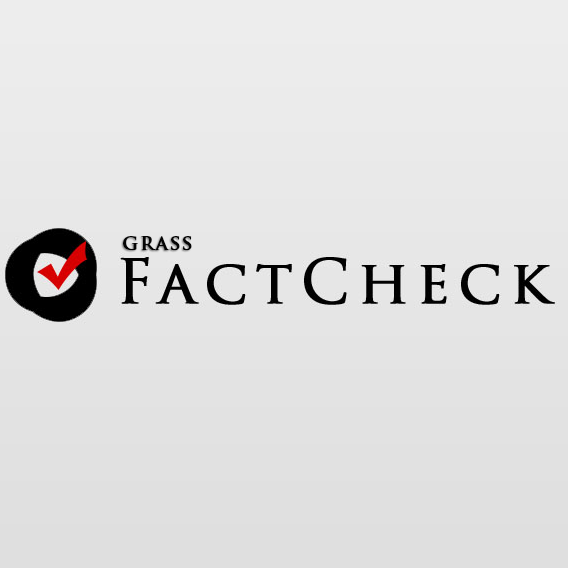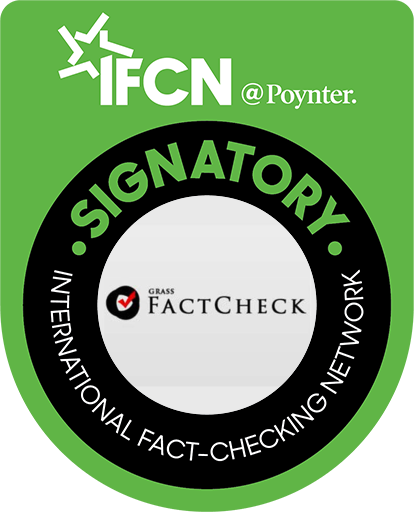Irakli Kobakhidze: “Export and trade turnover hit a record high in January-July.”
Verdict: FactCheck concludes that Irakli Kobakhidze’s statement is MOSTLY TRUE.
Exports rose by 8.9% to USD 3.8 billion, imports by 10.8% to USD 10.3 billion and trade turnover by 10.3% to USD 14.2 billion in January-July 2025 as compared to the same period last year.Detailed country- and product-level data was available for six months as of 13 August – the day when the statement was made – whilst July figures were only published in monetary terms, showing nominal values for exports and imports.Exports grew by 13.7% in the first six months, primarily driven by light vehicles, whose exports rose by 30% year-over-year to over USD 1.2 billion. The share of light vehicles in total exports also marked a new record, reaching 38%.Whilst imports also rose in the first six months, this growth was largely due to one-off factors – specifically, the January import of USD 514 million worth in paintings and sculptures unrelated to real economic activity. Imports in the first seven months would have grown by just 5.2% without the aforementioned one-off factors – a rise that could be considered marginal under 3.3% inflation.Exports fell by 11% to USD 609 million, imports by 6.7% to USD 1.5 billion and trade turnover by 8% to USD 2.1 billion in July alone, indicating a decline in trade activity. The release of detailed figures would no longer be able to cast this in a favourable light for the author of the statement.Considering that the figures cited were statistically accurate but omitted several key factors that allowed for an overstated portrayal of success, FactCheck concludes that Irakli Kobakhidze’s statement is MOSTLY TRUE.
Analysis
Irakli Kobakhidze posted a card on social media with the caption: “Exports increased by 8.9% in January-July 2025, reaching a record USD 3,843.8 million.
Trade turnover grew by 10.3% to USD 14,153.9 million which also represents a record volume like exports.”
Detailed country- and product-level data was available for six months as of 13 August – the day when the statement was made – whilst July figures were only published in monetary terms, showing nominal values for exports and imports.
The figures cited by Irakli Kobakhidze are accurate in nominal terms: exports grew by 8.9% year-over-year to USD 3.8 billion in seven months. However, exports recorded a fall of 11% in July after six months of growth, reducing the growth rate from 13.7% in January-June to 8.9% in January-July.
Graph 1: Exports by Month (USD Million)
Source: National Statistics Office of Georgia
Whilst July data is not available in a detailed breakdown, export growth was driven mainly by light vehicles as of January-June. Auto exports rose by 30% in the first six months as compared to the same period last year, equivalent to a USD 283 million increase.
Although Exports grew by 13.6% in the six-month period, the growth rate would have been only 5.6% when excluding light vehicles. Whilst light vehicles have been Georgia’s key export components for two decades and have previously led the list, their share in total exports averaged 10-15% before the Russia-Ukraine war. It then climbed to 32% in 2023-2024 and exceeded 37% in the first half of 2025.
Kyrgyzstan has become the main export market due to auto re-exports, followed by another Central Asian country – Kazakhstan. FactCheck cannot definitively confirm whether the vehicles from Kazakhstan are subsequently exported to Russia. Whilst the volumes and unit export value (USD 32,000) support the aforementioned assumption, Georgia would not be in violation of sanctions even if true as exports to Kyrgyzstan are not prohibited. Only 12 vehicles worth a total of USD 250,000 were exported directly to Russia in the past 18 months.
Georgia does not manufacture cars and all 49,121 units sold were re-exports. Whilst re-exports are economically beneficial, domestic exports generate higher added value.
Graph 2: Exports in January-June (USD Million)
Source: National Statistics Office of Georgia
Excluding passenger cars, exports of precious metals grew by 72% to USD 175 million. Exports of spirits fell by 7% to USD 123 million and wine exports declined by 22% to USD 122 million.
Wine exports fell 34% over six months in Georgia’s main wine market, Russia – from USD 111 million to USD 73 million. This sharp decline is likely driven by Russia’s decision last May to raise excise taxes on wine. Total wine exports to Russia amounted to USD 183 million in 2023 but the distribution over the months was uneven: USD 100 million in January-April and USD 83 million in the remaining eight months. The decline in exports to Russia early this year is also largely explained by this base period effect. Furthermore, wine exports outside of Russia grew slightly from USD 46 million to USD 49 million in January-June of the current year as compared to the same period the previous year.
Detailed data reflecting which countries imported what and at what price will be released on 19 August; however, the 11% drop as compared to the last July cannot be cast in a favourable light for the author of the statement, regardless of the specifics.
Import trends roughly mirror exports. Whilst imports grew by 10.8% in seven months, they later fell by 6.7% in July. Light vehicles again dominate imports, rising 10% to USD 1.7 billion over the first six months.
Graph 3: Imports by Month (USD Million)
Source: National Statistics Office of Georgia
Excluding passenger cars, imports were also boosted by one-off factors. Imports of paintings and sculptures reached USD 514 million in January (as compared to less than USD 10 million in total during 2013-2024). Their entry into the country was unrelated to actual demand or real economic activity. Imports in the first seven months would have grown by only 5.2% without these artworks which can be regarded as a marginal increase considering the 3.3% inflation.
Graph 4: Imports in January-July (USD Million)
Source: National Statistics Office of Georgia
Overall, whilst exports indeed grew by 8.9% and trade turnover by 10.3% over seven months, several important factors were missing from Irakli Kobakhidze’s statements: export growth was driven primarily by the re-export of light vehicles, import growth was largely due to one-off factors unrelated to real economic activity and both exports and imports fell in the final month of the reporting period. Considering that the figures cited were statistically accurate but omitted several key factors that allowed for an overstated portrayal of success, FactCheck concludes that Irakli Kobakhidze’s statement is MOSTLY TRUE.








